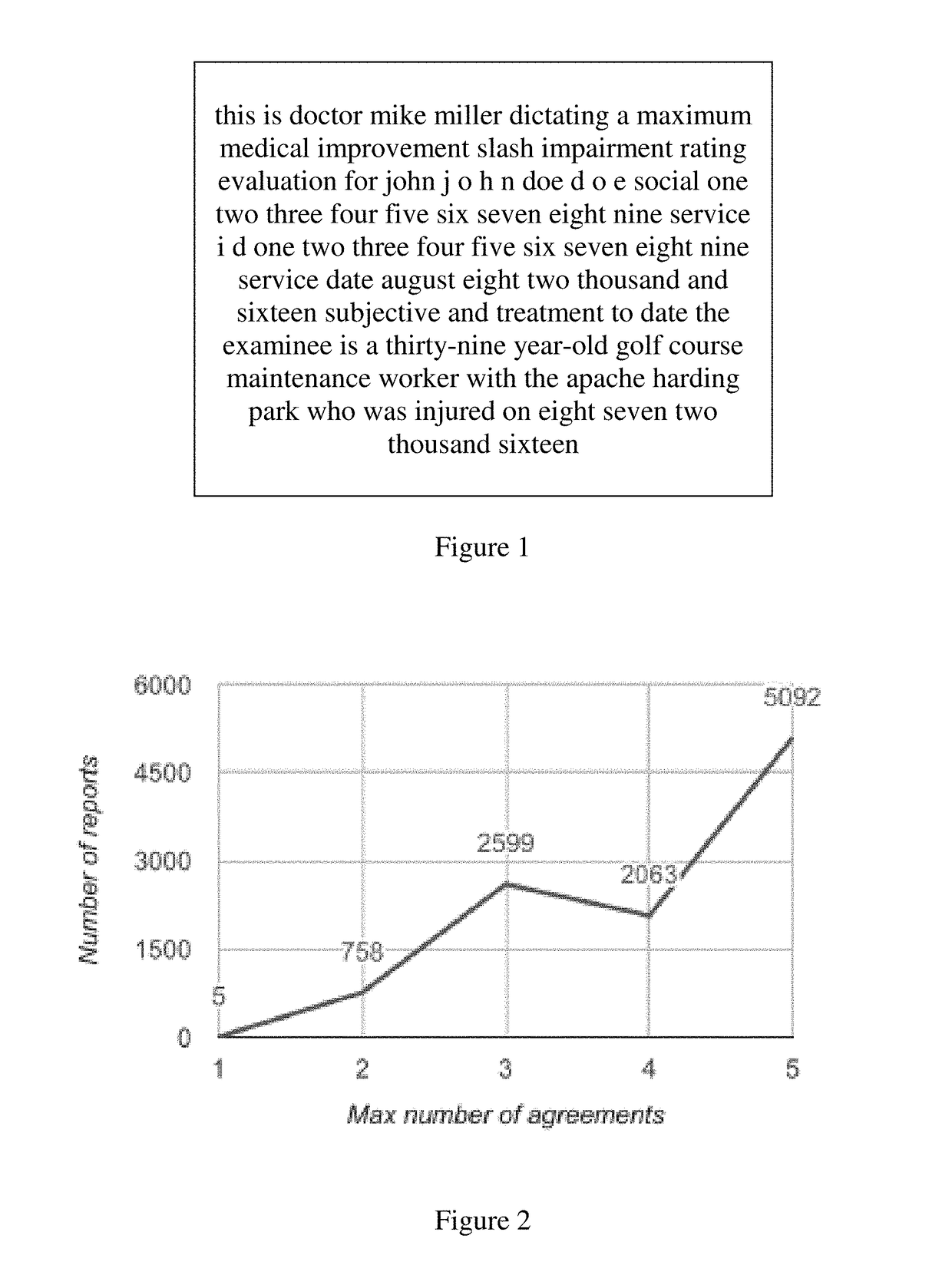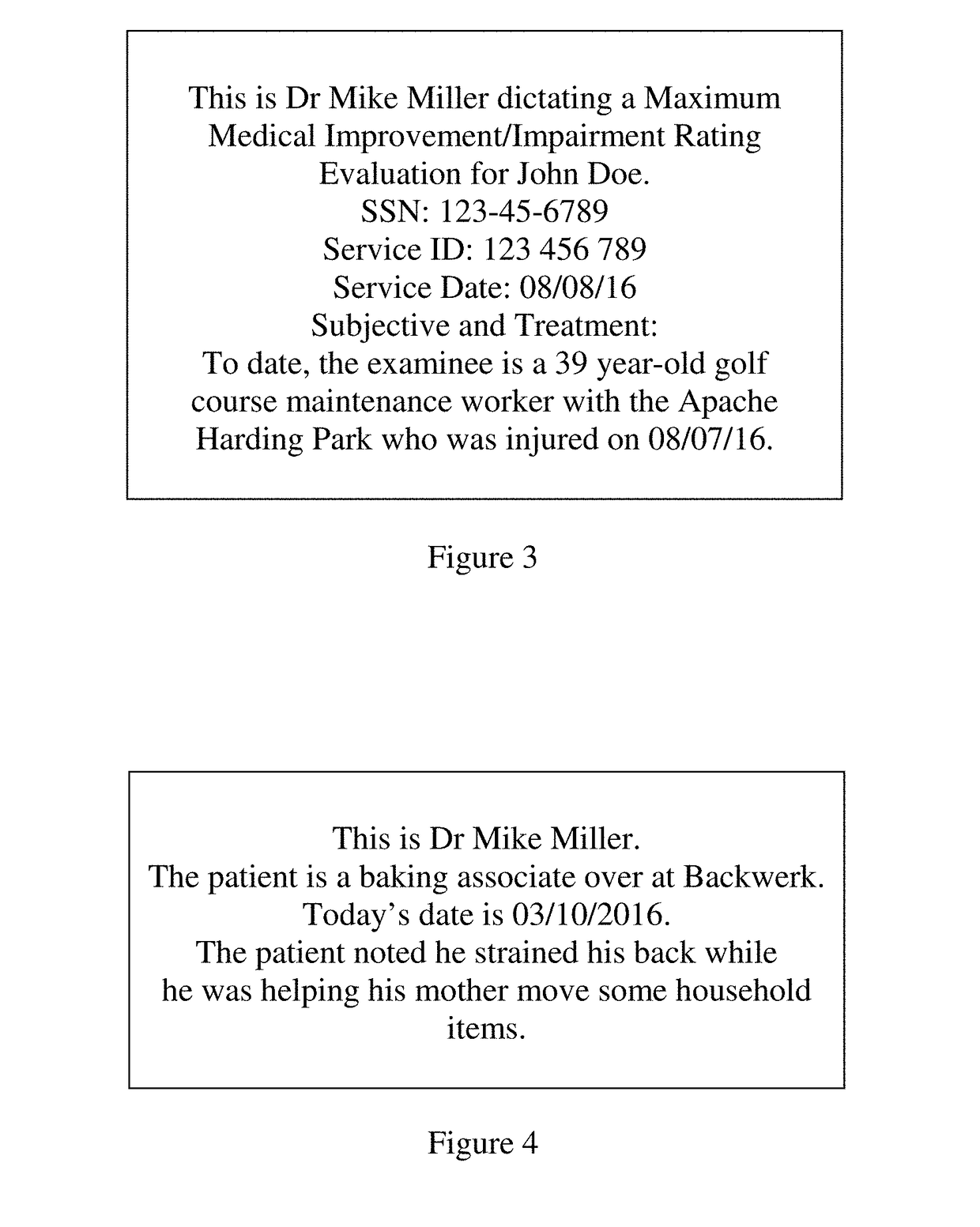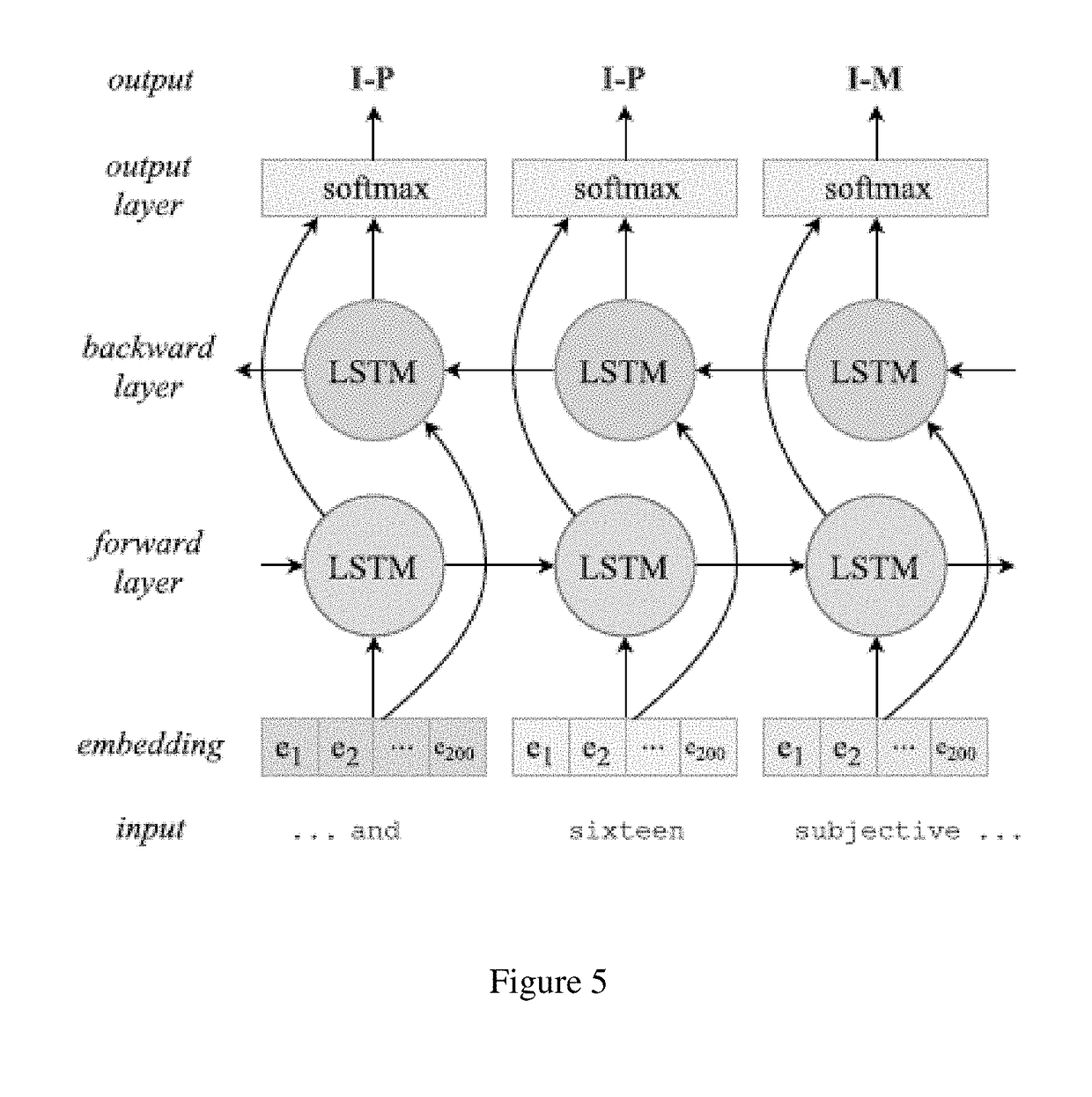Method to aid transcribing a dictated to written structured report
a structured report and scripting technology, applied in the field of scripting scripting to written structured reports, can solve the problems of increasing generalizability and nns, and still struggling to obtain performance gains, and achieve the effect of reducing complexity
- Summary
- Abstract
- Description
- Claims
- Application Information
AI Technical Summary
Benefits of technology
Problems solved by technology
Method used
Image
Examples
Embodiment Construction
[0032]Both the source verbal dictation and the final written report it is transformed into are structured; a key factor is that elements of the structure will not be coded directly in the individual vocal and graphical elements. Transforming the first into the second is more effectively assisted when the assistant works with both the structure and the content.
[0033]A ‘word’ is the smallest unit (of either speech or text) with objective or practical meaning; yet there are elements of speech (intonation, emphasis, pause length and relative pause length) and text (spacing, lineation, and punctuation) which are not “words” as such, yet which are necessary to comprehend and use in transforming the first into the second.
[0034]A word can be a simple stem; or it can be complex, when it is an agglomeration of a stem combined with one or multiple affixes (the most common are prefixes and suffixes). Words and the non-word elements of both verbal dictation and the final report can be represente...
PUM
 Login to View More
Login to View More Abstract
Description
Claims
Application Information
 Login to View More
Login to View More - R&D
- Intellectual Property
- Life Sciences
- Materials
- Tech Scout
- Unparalleled Data Quality
- Higher Quality Content
- 60% Fewer Hallucinations
Browse by: Latest US Patents, China's latest patents, Technical Efficacy Thesaurus, Application Domain, Technology Topic, Popular Technical Reports.
© 2025 PatSnap. All rights reserved.Legal|Privacy policy|Modern Slavery Act Transparency Statement|Sitemap|About US| Contact US: help@patsnap.com



